Balance is fundamental to existence.
It underpins the harmony between various dualities—such as the four elements, the material and spiritual realms, form and the formless, day and night, and masculine and feminine. These opposing forces are integral to our reality.
The principle of correspondence, often summarized as “As above, so below,” implies that the patterns of the macrocosm are mirrored in the microcosm. This means that the universe’s grand designs are reflected within us. To achieve peace, happiness, and fulfillment, we must bring balance and harmony into our own lives.
Exploring and meditating on symbols can be a profound way to find this balance. In this article, we will examine 28 meaningful symbols of balance and harmony. These symbols can serve as beacons, guiding you toward greater equilibrium and completeness in your life. Let’s get started.
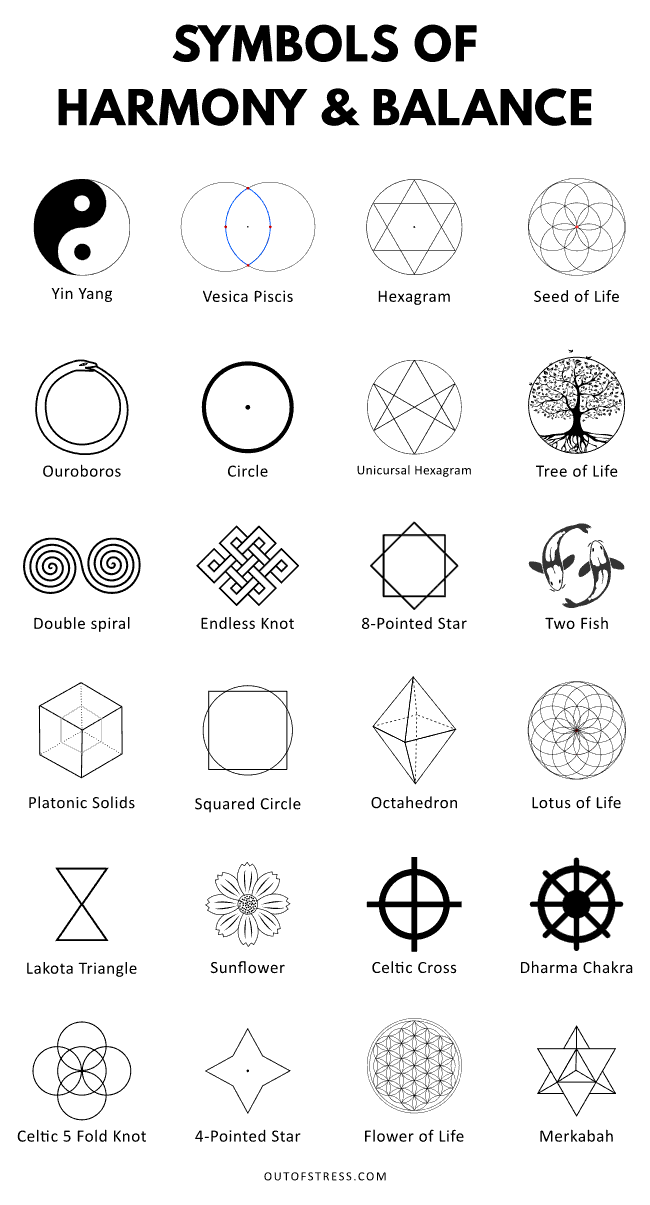
YIN-YANG
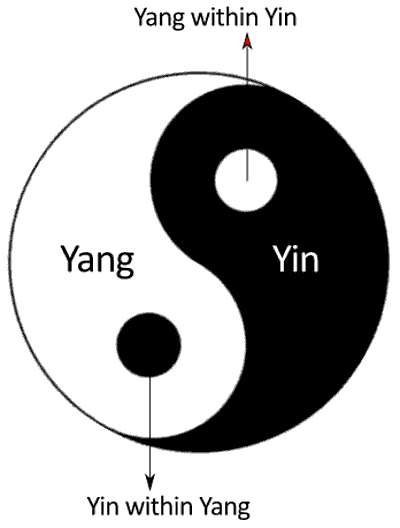
The Yin-Yang is a timeless Taoist symbol representing balance and harmony.
It is depicted as a circle divided into two teardrop-shaped halves: one black (Yin, symbolizing feminine energy) and one white (Yang, representing masculine energy). A striking feature of the symbol is that each half contains a small dot of the opposite color, illustrating the profound concept that within each force lies an element of its counterpart.
This reflects the idea that the masculine holds a trace of the feminine, and the feminine contains a touch of the masculine, emphasizing the perfect balance, harmony, interconnectedness, and interdependence of opposites.
UNICURSAL HEXAGRAM

The standard hexagram, as previously noted, consists of two overlapping triangles and cannot be drawn in a single stroke. In contrast, the unicursal hexagram can be created with a single, continuous line, without lifting the pen.
Its symmetrical design and uninterrupted formation represent balance, harmony, unity, interconnectedness, and the concept of infinity, reflecting the seamless and eternal nature of these principles.
6-POINTED STAR (HEXAGRAM)

Similar to the Yin-Yang, the Six-Pointed Star (hexagram) is an ancient symbol associated with balance and harmony. It is composed of two overlapping equilateral triangles: one pointing upward, symbolizing the Divine Masculine and the material realm, and one pointing downward, representing the Divine Feminine and the spiritual realm. The intersection of these triangles signifies the perfect balance between these opposing polarities, which forms the foundation of all creation. The center of the star embodies the source or consciousness from which all creation originates.
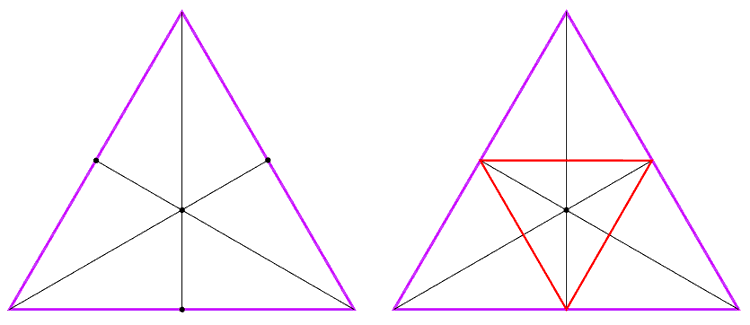
Interestingly, similar to the Yin-Yang, if we connect the central points of all three sides of one of the equilateral triangles in the hexagram, we create a smaller equilateral triangle facing in the opposite direction within the larger triangle (as depicted in the image above). This reflects the concept of one polarity existing within the other, much like the Yin-Yang. When these triangles are combined, they form a smaller hexagram within the larger hexagram, mirroring the Yin-Yang’s representation of balance and interconnection.

The Six-Pointed Star also symbolizes the balance and harmony among the four basic elements: Fire, Air, Earth, and Water. In this representation, Fire and Air are associated with masculine qualities and are represented by upward-facing triangles, while Earth and Water are linked to feminine qualities and are represented by downward-facing triangles. This arrangement illustrates the equilibrium between these fundamental forces, reflecting the harmonious interplay of both masculine and feminine aspects within nature.
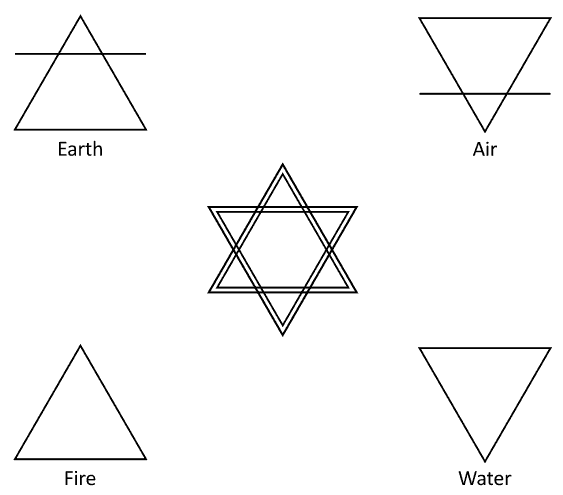
The center of the Six-Pointed Star represents the fifth element, spirit or ether, which permeates all four basic elements: Fire, Air, Earth, and Water.
Thus, the six-pointed star symbolizes the balance between a person’s groundedness, passion (Fire), flow (Water), and airiness (Air). It encourages harmonizing both the spiritual and material aspects of life while balancing the four elements within oneself.
VESICA PISCIS

The Vesica Piscis is a fundamental symbol in Sacred Geometry, consisting of two overlapping circles.
In this design, the circumference of one circle passes through the center of the other, creating a lens-shaped area known as the Vesica Piscis (or Mandorla). This shape, like the Yin-Yang, embodies the perfect balance between the spirit and material realms or two opposing forces and energies. The circle on the left represents the spirit realm (feminine energy), while the circle on the right signifies the material realm (masculine energy). The intersection of these circles, forming the Vesica Piscis, symbolizes the source of all creation.

Interestingly, each circle within the Vesica Piscis contains a Six-Pointed Star, and when the stars overlap in the center, they form an additional smaller star within the Mandorla, as illustrated in the image above. This intricate layering further emphasizes the interconnectedness and balance inherent in the Vesica Piscis symbol.
SEED OF LIFE
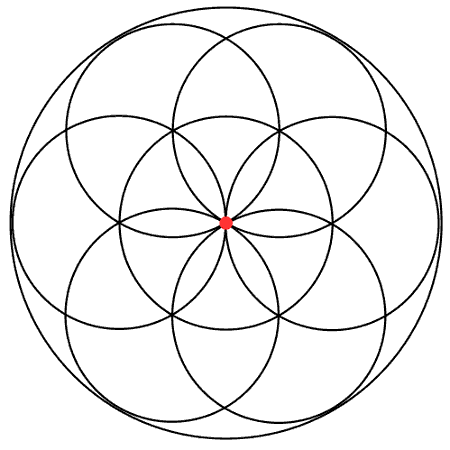
The Seed of Life is a potent symbol in Sacred Geometry, formed by adding five more circles to the Vesica Piscis, resulting in a total of seven circles: one central circle surrounded by six overlapping circles.
The central circle represents the spirit or source energy that connects all other circles, symbolizing balance, unity, interdependence, and interconnectedness. The symmetrical pattern of the Seed of Life further emphasizes balance and harmony. Additionally, the seven circles can be seen as representing the seven days of creation.
Interestingly, the Seed of Life contains both the Yin-Yang and the Six-Pointed Star within its structure. The following image illustrates how the Yin-Yang symbol is integrated into the Seed of Life.
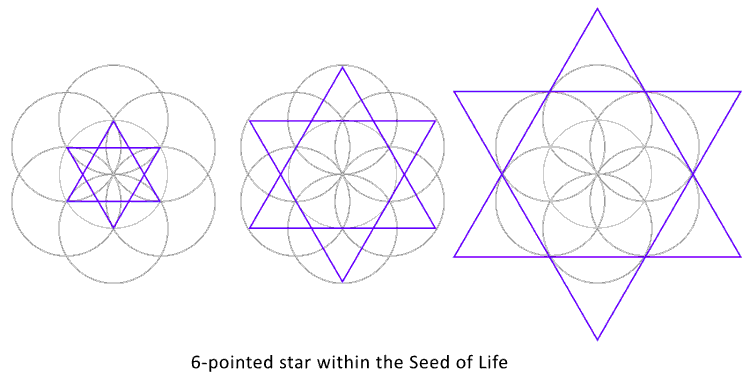
The following image depicts three instances of the Six-Pointed Star symbol within the Seed of Life.
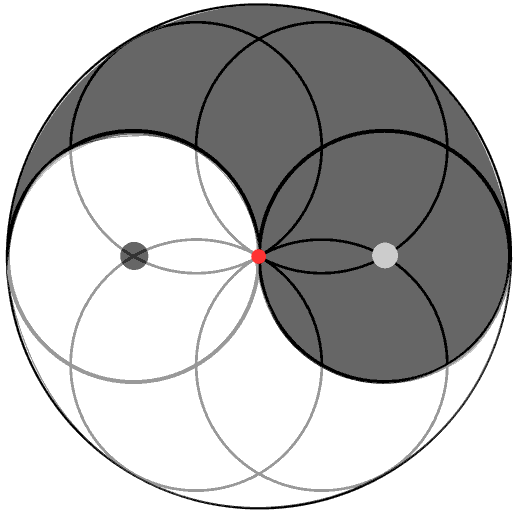
The Seed of Life serves as a foundation for many additional symbols that also represent balance and harmony. These include the Flower of Life, the Egg of Life, the Lotus of Life, the Torus, the Fruit of Life, Metatron’s Cube, and the Platonic Solids.
PLATONIC SOLIDS
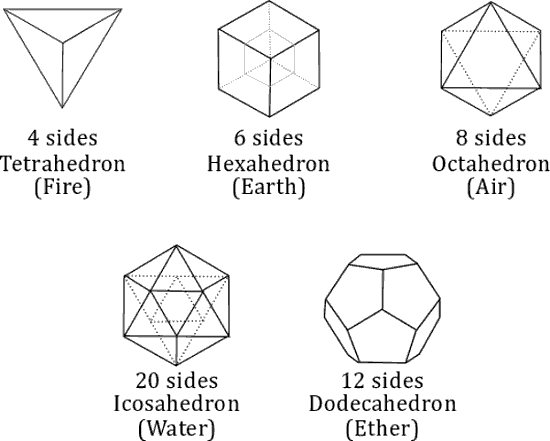
The Platonic solids are unique geometric shapes that embody balance and harmony. The five distinct Platonic solids are:
- Hexahedron (Cube)
- Tetrahedron (Triangular Pyramid)
- Octahedron (Double Pyramid)
- Dodecahedron
- Icosahedron
These solids are distinguished by three key characteristics:
1. Uniform Faces: Each face of the Platonic solids is of the same shape and size.
2. Identical Vertices: All vertices or corners are identical across each solid.
3. Spherical Fit: Each solid can be perfectly inscribed within a sphere, with all vertices touching the sphere’s surface.
For example:
– The Tetrahedron has 4 triangular faces, with 3 triangles meeting at each vertex.
– The Hexahedron (Cube) has 6 square faces, with 3 squares meeting at each vertex.
– The Octahedron features 8 triangular faces, with 4 triangles converging at each vertex.
– The Dodecahedron consists of 12 pentagonal faces, with 3 pentagons meeting at each vertex.
– The Icosahedron has 20 triangular faces, with 5 triangles converging at each vertex.
The Platonic solids also symbolize the five elements, making them perfect representations of balance and harmony.
OCTAHEDRON
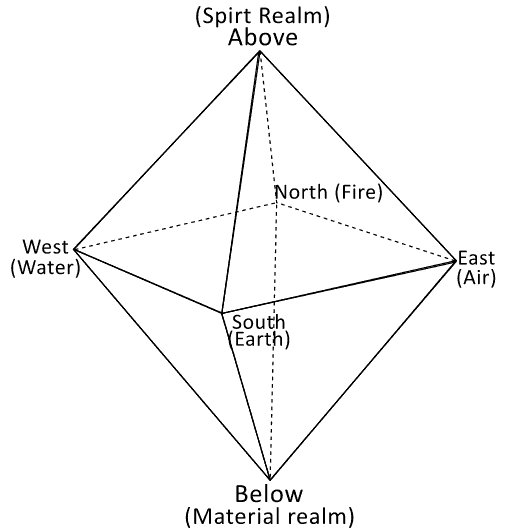
Among the Platonic solids, the Octahedron stands out as particularly special. It is created by joining two square-based pyramids (or Pentahedrons) at their bases. This shared square base symbolizes the four elements: Fire, Air, Earth, and Water.
In this configuration, the upper pyramid represents the Spiritual Realm, while the lower pyramid symbolizes the Material Realm. The center of the Octahedron embodies Source energy. Thus, the Octahedron signifies the balance between the spiritual and material realms, as well as the equilibrium between Spirit/Source energy and the four elements of the material world.
LAKOTA TRIANGLE
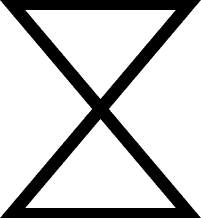
The Lakota symbol is a 2D representation of the Octahedron. An ancient Native American symbol, it embodies the balance and connection between the sky or heavens (spiritual realm) and the Earth (material realm). As such, the Lakota symbol represents balance, unity, and interconnectedness.
MERKABAH
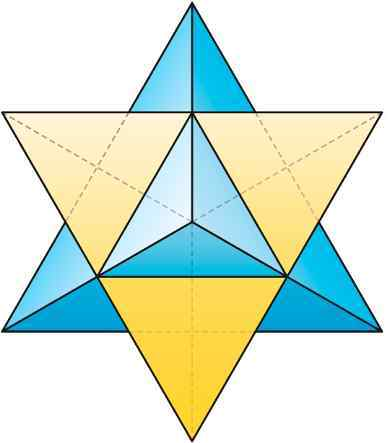
The Merkabah is the three-dimensional representation of the Six-Pointed Star. It is formed by two overlapping tetrahedrons: the upper one rotates clockwise, and the lower one rotates counterclockwise.
The term “Merkabah” is derived from Hebrew and can be broken down as follows:
- Mer: Light
- Ka: Spirit
- Bah: Body
Thus, Merkabah literally means “the Body and Spirit surrounded by light.” In this symbol, the upper tetrahedron represents the Spirit, while the lower one represents the Body. Their harmonious union generates the light of life or creation. Consequently, the Merkabah is a powerful symbol of balance and harmony.
CELTIC CROSS

The Celtic Cross features a vertical and a horizontal line of equal length intersecting at the center, forming a cross shape, which is enclosed by a circle that symbolizes eternity or the cyclical nature of life.
The horizontal line represents the divine feminine or spiritual realm, as well as the feminine elements of Water and Earth. Conversely, the vertical line signifies the divine masculine or material realm and the elements of Fire and Air. Their point of intersection symbolizes the spirit or source energy.
Thus, the Celtic Cross embodies the harmony of the four elements and the equilibrium between the material and spiritual worlds.
EIGHT-POINTED STAR

In Hinduism, the eight-pointed star, created by two overlapping squares, represents Lakshmi, the Goddess of Wealth and Abundance. This symbol signifies the balance between the eight forms of wealth, which are:
- Dhan: Material wealth or money
- Dhanya: Agricultural wealth or crops
- Gaja: Wealth in the form of elephants or animals
- Ayu: Wealth in terms of longevity and health
- Vijaya: Wealth from success and victory
- Sukh: Wealth in the form of happiness and comfort
- Sampatti: Overall prosperity and well-being
- Vidya: Wealth in the form of knowledge and wisdom
The eight-pointed star represents the harmonious balance and integration of these diverse forms of wealth, reflecting the comprehensive abundance that Lakshmi bestows.
SQUARED CIRCLE

The square often symbolizes the material realm, with its four corners representing the four elements: Fire, Air, Water, and Earth. In contrast, a squared circle signifies the harmonious and interdependent relationships among these elements. The circle also represents the fifth element, spirit or ether, and the cyclic nature of existence.
CELTIC FIVE-FOLD KNOT
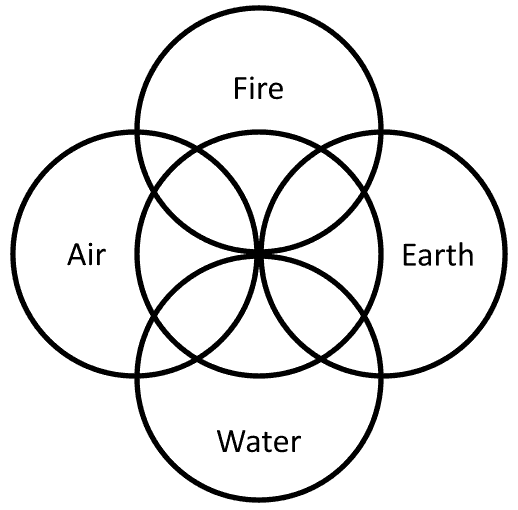
Similar to the Squared Circle, the four outer circles of the Celtic five-fold knot represent the four elements. The central circle, which connects these four outer circles, symbolizes the spirit, universe, or source energy. Together, these five circles represent the balance and interconnectedness of the elements and all things in nature.
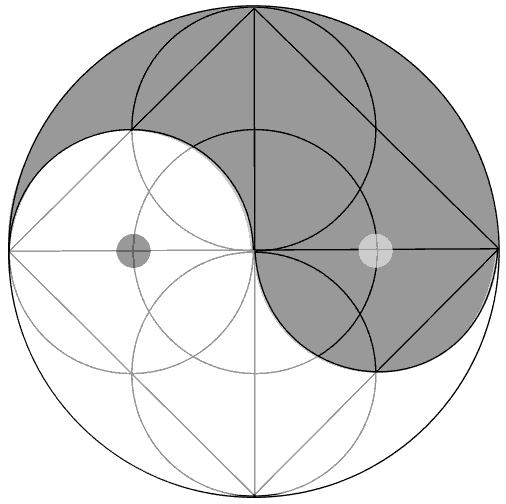
Interestingly, the Five-Fold Knot also incorporates the Yin-Yang symbol within its design, as illustrated above. This integration further emphasizes the balance and harmony represented by the knot, linking Eastern and Celtic symbolism.
CIRCLE

Humans have long recognized the circle as the most perfect shape and, as such, it has inspired countless spiritual symbols. Examples include the Yin-Yang, the Enso, and the Seed of Life. In many of these spiritual traditions, circles like the Enso symbolize the oneness and interconnectedness of the entire universe, inherently representing life’s great harmony.
DOUBLE SPIRAL
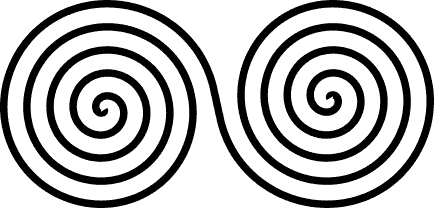
The double spiral is an ancient symbol that represents opposing forces, echoing the dynamics of a star, where the outward push of energy is balanced by its immense inward gravitational pull. In human life, the double spiral can symbolize the balance between action and rest, or the need to both engage in activity and allow for periods of rejuvenation. This symbol captures the equilibrium necessary for harmony in both natural and personal contexts.
MOON

The moon has long symbolized femininity and balance across various world cultures. Its consistent, cyclical nature demonstrates that it’s natural to experience periods of bright fullness followed by times of darkness and rest. This cycle reflects the acceptance of both active and reflective phases, emphasizing the importance of embracing and balancing these natural rhythms.
TWIN KOI FISH
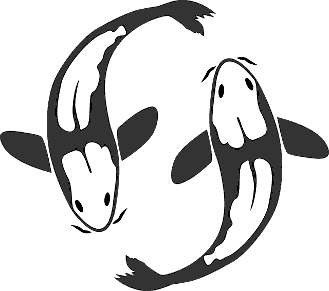
The Yin-Yang symbol is frequently depicted as black and white koi fish aligned head-to-tail, representing a male and female koi fish. This imagery embodies the balance and harmony of opposites, such as masculine and feminine, light and dark, and life and death. It visually captures the dynamic interplay and interdependence of these contrasting forces.
TREE OF LIFE

Illustrated as a majestic tree with branches extending skyward and roots reaching downward, the Tree of Life symbolizes the balance between grounding and growth. It represents the idea that while grounding ourselves in material desires can limit our growth, an unending pursuit of growth without grounding can leave us feeling unfulfilled and unstable. Thus, the Tree of Life emphasizes the need to harmonize our aspirations with a sense of rootedness and stability.
ENDLESS KNOT
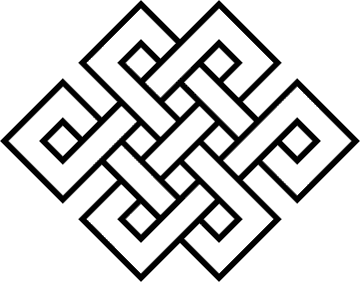
Illustrated as a majestic tree with branches extending skyward and roots reaching downward, the Tree of Life symbolizes the balance between grounding and growth. It represents the idea that while grounding ourselves in material desires can limit our growth, an unending pursuit of growth without grounding can leave us feeling unfulfilled and unstable. Thus, the Tree of Life emphasizes the need to harmonize our aspirations with a sense of rootedness and stability.
DHARMA CHAKRA
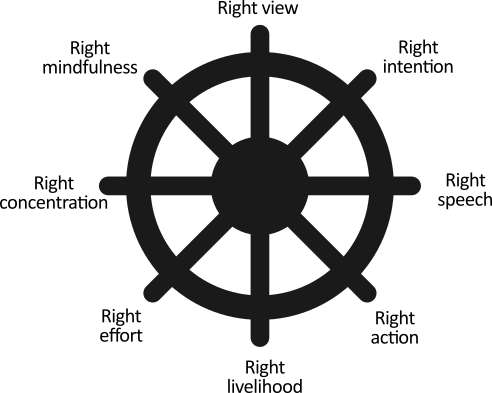
Symbolizing the concept of “dharma,” or perfect order, this symbol is central to Hinduism, Buddhism, and Jainism. The turning of the wheel represents the cyclical nature of the universe, illustrating that everything comes and goes with precise regularity. It conveys that, despite appearances, everything is in harmony and follows a natural order.
NUMBER 2

Have you noticed repeating numbers like ‘222’ on license plates or receipts? If so, you’re not alone! In numerology, the number 2 often signifies the need for balance in your life. Are you striving for more balance between work and rest, masculine and feminine, or introversion and extroversion?
COSMOS FLOWER
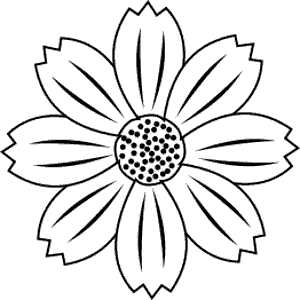
The cosmos flower’s perfectly aligned petals exhibit remarkable symmetry, leading to its name. This orderliness has been associated with the perfect balance and harmony of the universe.
EQUILATERAL TRIANGLE
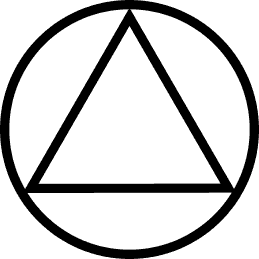
The equilateral triangle, with its equal sides and angles, represents the harmony of body, mind, and spirit. This symbol suggests that a harmonious life requires a balanced state of all three, with none dominating the others.
ZEBRA
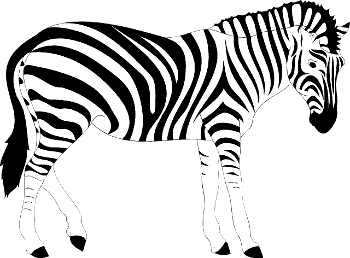
The zebra’s striking juxtaposition of black and white resembles a living Yin-Yang symbol. This animal reminds us that seemingly opposing forces can coexist in perfect harmony.
LUCKY BAMBOO

Have you ever received a lucky bamboo houseplant with its distinctive short stalks? Did you know that the number of stalks can hold symbolic meaning? Five stalks of lucky bamboo are said to represent balance and harmony. If you’re feeling unbalanced, consider adding this houseplant to your home.
GANESHA

In Hinduism, Ganesha, the powerful elephant-headed deity, is believed to remove obstacles from life. One such obstacle can be attachment to materialism. As a symbol of harmony, Ganesha helps us find balance between the material and spiritual realms.
FLAMINGO
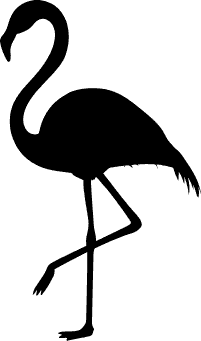
The flamingo’s impressive ability to balance on one leg, even while resting, is a literal representation of balance. This showcases their absolute centeredness.
SUNFLOWER
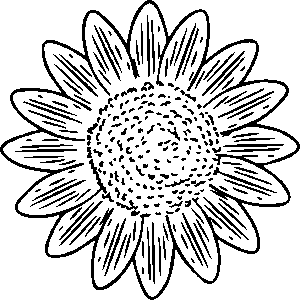
The sunflower’s seeds naturally follow a perfectly symmetrical spiral shape known as the Fibonacci spiral. This iconic shape, created by nature without human or machine intervention, represents the balance and harmony found in the natural world.
IN CONCLUSION
The Universe—and life itself—are always in balance and harmony, even if we’re not always aware of it. The forces within you, such as masculine and feminine energies, also seek to achieve balance. When you’re out of sync, you might feel tired, restless, anxious, irritable, or even depressed. However, spiritual symbols can serve as reminders to restore your equilibrium. If a particular symbol resonates with you, consider displaying it on your wall or wearing it as jewelry. Let it be a constant reminder that the Universe is inherently harmonious and that you can strive to reflect that balance in your own life.






